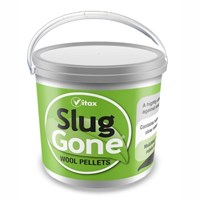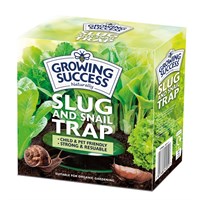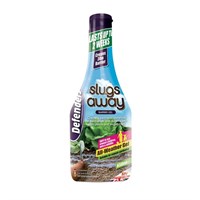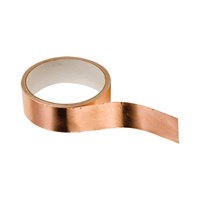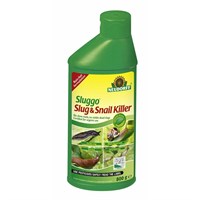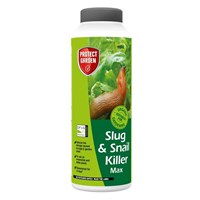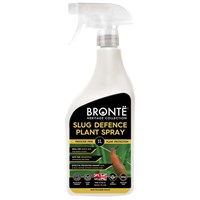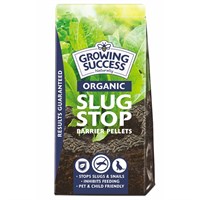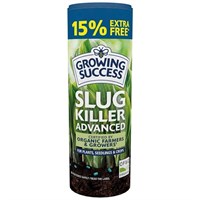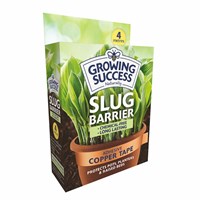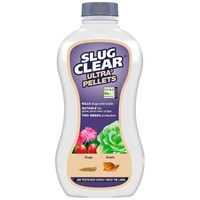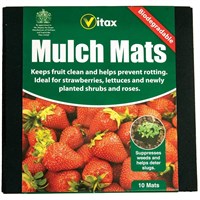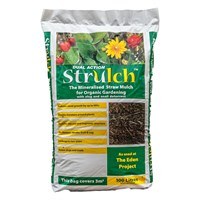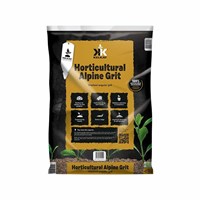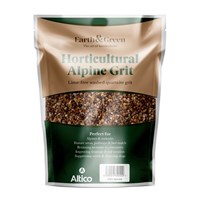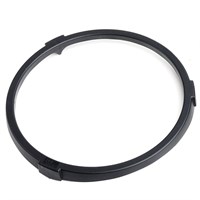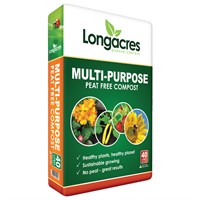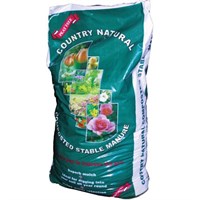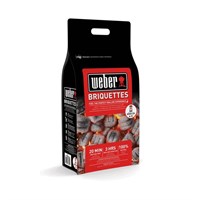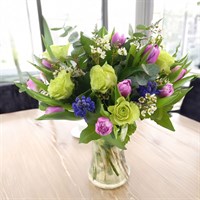Your search returned 28 Products
Your search returned 9 related information pages
Related information pages
Into the Garden - July 2022
Get into the garden in glorious sunshine this July. Keep your flowers looking their best with all the best tips and tricks to make them last!
…
» read more
Biological controls - the ultimate form of natural pest control
We have all experienced the horrors of pests infesting our garden, from slugs and snails devouring hostas and lupins, aphids such as blackfly and greenfly smothering our roses, scale insects on hydrangeas, and grubs like chafers and leatherjackets infesting our lawns.
…
» read more
Slugs & Snails - What Are They Good For?
As the song says - absolutely nothing. Or are they? Wells as it turns out they are an excellent food source for wildlife and have an important role in the ecosystem by eating decaying plant matter and fungi. However they also prefer tastier fare such as our prize hostas lupins and seedlings.
…
» read more
What to do in your garden - March 2017
Spring is here at last and now is the time everything is “full steam ahead” in the garden. We have so much to see in store and online so come in and get inspired. Here’s a reminder of what you can do in the garden right now:
Plan and plant a colourful herbaceous border with our amazing 9cm pot perennials at a ridiculously low price of only £1.49 each or 6 for £7.99 (promo in store only). There’s plenty to choose from- lupins to lavender, delphiniums to dianthus. Plants in groups of 3 or 5 of each variety for maximum impact at minimum cost!
Dahlias – with colours to suit every taste, dahlia’s have come back into fashion and are fantastic for late summer colour in your borders or containers. They make great cut flowers and varieties with single flowers are excellent for pollinating insects. Plant in a sunny position.
Baby bedding plants- basket and container plants for spectacular summer colour – our Perfect Choice 7cm pot range is now in store! Over a hundred varieties to choose from. Priced at only 79p each, get a head start on growing on your summer bedding. Please note: these plants are tender (i.e not frost hardy) and will need to be grown in a greenhouse or bright frost free place and gradually potted on to larger sized pots. Once the summer comes you’ll be able to place outdoors for a dazzling display. Click here to find out more.
Window boxes and container plants for spring colour: potted spring bulbs – many varieties available for instant impact. Narcissi, tulips, iris plus many more. Bedding packs of spring flowering plants such as viola, pansy, polyanthus (primula) Add to your borders or containers for a pop of spring colour.
Spruce up your rockery: we have a range of 1 litre pot alpines – a snip at 4 for only £10! Aubrieta, Saxifrages and Dianthus are looking superb. These perennial plants are also useful for ground cover in sunny, well drained borders, or filling an empty space in a container.
Heathers are also in – in bud and flower – 9cm pot £1.49 or 11cm £2.49. Available throughout the year, there’s a heather variety for every month, and early spring flowering heathers are nectar rich so a magnet to bees. Best planted in groups of 3 or 5 to make a good show of colour. Most prefer acidic soil (ericaceous) but Erica carnea types are lime tolerant (can be planted in alkaline or chalky soils).
Spring- flowering shrubs: we have so many to choose from it’s hard to know where to start but here are a few favourites: Camellia -fabulous plants full of bud from small to large pot size, spring -flowering fragrant Viburnums such as Viburnum ‘Anne Russell’, V. carcephalum ‘Juddii’ or Viburnum carlesii. Early spring favourites such as forsythia and flowering currant -Ribes ‘King Edward VII’. Daphne odora ‘Aureomarginata’ has the most delicious fragrance with the added bonus of evergreen foliage. Magnolia’s – some good-sized plants with plenty of flower buds.
Now’s the time to grow early seed potatoes – we have a large range in stock. Start them off (sprout or chit them) in a seed tray in a brightly lit frost-free place spot. Find out more on our guide by clicking here.
Plant onion sets- as soon as the ground is “workable”, to have a crop ready in late summer to early autumn. Plant 5-10cm (2-4in) apart with the rows 25-30cm (10in-1ft) apart. Depth of planting 2cm (¾ in). Only the tips of the onion sets should be showing. You may need to net the crop or cover with fleece to stop birds damaging the onions, until they are established.
Protect young shoots of perennial plants from slug or snail damage – we have a vast range of products to help you win the battle! From organic remedies like slug traps, physical barriers such as copper tape, or Growing Success Slug Stop granules, to a Slug Bell in which to put pellets out of harm’s way. The latest showerproof slug pellets from Westland Eraza, to Growing Success Slug Killer (organic) -we have all bases covered.
Lily bulbs are now in stock! There’s no finer fragrance on a warm summers’ evening, than lilies growing in your garden. If your soil is too wet and heavy, why not grow in containers and plunge into the border - better still in pots on the patio so you can enjoy them close-up. Click the image below for our guide on getting the best from planting lily bulbs in pots:
…
» read more
Planning Your Small Scale Garden
Part 2 - Planting Your Small Scale Garden
In a small garden every plant counts and plants with ‘multi-season’ interest are particularly valuable. Look for plants that offer flowers and fruit, foliage and flowers, or plants that have autumn colour or interesting stems or foliage during winter.
Plants that have both flowers and fruit
These include plants that have the added bonus of foliage interest as well. Berberis forms can really come into their own here, for example the tiny Berberis thunbergii 'Tiny Gold' which has yellow leaves, young red shoots, yellow spring flowers and red fruit in autumn. Berberis thunbergii f. atropurpurea 'Admiration' has red-orange leaves but is otherwise similar. There is now a range of disease-resistant Hypericum which have yellow flowers and coloured fruits, try Hypericum Magical Beauty = 'Kolmbeau' for its berries that start peachy-pink. If you want a good-sized, handsome shrub the fan-shaped, golden-leaved Leycesteria formosa Golden Lanterns = 'Notbruce' has red flowers and purple fruits that provide interest all summer through.
Plants that have winter interest
Consider flowering plants with foliage that changes colour in winter. Some Hebes have this quality, coming in a range of sizes and needing a spot that has sunshine in winter. Try the compact Hebe 'Caledonia' with violet flowers and rose-purple winter foliage whilst Hebe 'Pascal' has copper-red winter foliage. Amongst herbaceous plants Bergenia often have burnished winter foliage, for example Bergenia 'Overture' has bright pink spring flowers and leaves that are burgundy in winter. The stems of dogwoods can positively glow in winter sunlight – for beautiful variegated foliage and red stems try Cornus alba 'Spaethi' or Cornus sanguinea 'Midwinter Fire' for good autumn colour followed by orange winter stems. These are cut back to near ground-level in spring, once established.
Plants with exceptional foliage
Evergreens in particular can provide interest throughout the year. Pittosporum tenuifolium 'Gold Star' has dainty shimmering foliage and can be pruned for containment if space is limited. In warm gardens the exotic Coprosma and Lophomyrtus forms, some of which change colour at different seasons, can be fascinating. Try Coprosma repens 'Tequila Sunrise’ or Lophomyrtus x ralphii 'Red Dragon' with red to black foliage. Slow but beautiful Nandina domestica 'Wood's Dwarf' glows red in winter and is gold, green and red in summer. For foliage drama where a feature plant can be accommodated Fatsia japonica 'Spiser's Web' is exotic, with huge variegated leaves.
Plants for a hot and dry place
Where your garden has a hot and dry area, herbaceous plants can be invaluable. Slugs permitting, try Alstroemeria, coming in a huge range of sizes and happy in a container, such as Alstroemeria 'Orange Gem'. Striking Abutilon with big bell-flowers can be grown as annuals, try apricot-flowered Abutilon 'Linda Vista Peach'. Colourful Zinnias have a long season, if deadheaded, an example being Zinnia marylandica 'Zahara Yellow' (Zahara Series). Sedums also have a place in a hot spot. In winter they provide architectural interest with their flat brown seed heads, try grey purple Sedum 'Matrona'. Frothy purple fennel is lovely placed at the rear, especially Foeniculum vulgare 'Purpureum'. Requiring little attention Salvias, such as the small shrub Salvia microphylla 'Pink Blush' has rich pink flowers for months whilst silvered Convolvulus cneorum is decorative all summer.
This has just dipped a toe into the possibilities. We haven’t even started on walls and fences that can be clad in repeat-flowering climbing Roses paired with Clematis...
Enjoy!
This blog post was kindly contributed by Susan A. Tindall
…
» read more
English hedgehogs in a dramatic decline... but we can all help!
At the age of 23, I can honestly say that I have only a handful of memories of ever seeing a hedgehog. When I was around the age of 6 or 7, me and my family became aware of very timid hedgehog visiting our garden in the evenings for a spot of dinner. Sometimes we'd catch a glimpse of it but not always... and after a week or so it stopped visiting.
I vividly remember one evening my mum waking me up and excitedly telling me to go and look at something outside. Confused and sleepily I stepped forwards slowly and could see the hedgehog in the middle of the grass... but it was hunched over and didn't look quite right. For a horrible few moments I worried that it had hurt itself, but on closer inspection we noticed the hedgehog drop something.. it had been holding a baby hedgehog! The mother took a few small steps backwards, allowing me and my mum to really get a closer look of the baby. After a minute or so, the mother stepped forwards, picked up her baby, walked away and we never saw her again.
It felt like she had been using our garden as a maternity ward and before leaving wanted us to understand why she had been there. It is a fond memory of mine, especially as I haven't ever seen a hedgehog since.
Were you aware that, devastatingly, English hedgehogs are disappearing about as fast as tigers are worldwide? To be more precise - they are in decline by around 97%. Surprisingly, there is also evidence to suggest that they are suffering just as badly in the wider countryside as they are in more built-up areas.
This shocking revelation comes as a result of a number of different factors: loss of hedgerows and grassland due to urban development, digestion of pesticides and herbicides, and believe it or not but even tidy and sterile gardens have majorly contributed (fences and roads have been pushing hedgehogs into smaller inhabitable areas).
But we can all help to stop this species being lost forever through a number of different ways:
Place down some tubing in your garden and fill it with dried mealworms, cat food and water (make sure it's large enough for a hedgehog - you don't want it to get stuck!). This provides a fantastic and cost-effective home or pit-stop for passing hedgehogs.
Leave a messy patch in your garden (compost heaps or log piles work too!) and hedgehogs may use these to create a nest for hibernating or rearing babies - messy patches are beneficial to hedgehogs because they attract insects!
Hedgehogs won't ever stay in just one garden - they need more space: streets, neighbourhoods and linked gardens. You could help make this possible by cutting one or two small holes in your garden fence (approximately 13cm x 13cm in diameter) to allow them to move easily around from garden-to-garden - then make sure to let all your friends and neighbours know to do the same!
Hogilo House from Wildlife World
For those of you with a bit more cash to spare, why not consider buying a Wildlife World Hedgehog House (£47.99?) or a Wildlife World Hogilo Hedgehog House (£44.99)? Place these in a shady and peaceful area of your garden - and make sure that you've cut a hole in your fence for them to access it! Both of these homes can be bought online or in store from Longacres Bagshot and Shepperton.
Don't litter! Even something as small as an elastic band can kill a hedgehog.
Donate to a hedgehog charity and provide funding for research into ways to stop hedgehogs from going into extinction. You could even fundraise for them by holding a charity event!
Try to avoid treating your lawn with herbicide and putting down slug pellets.. these can kill hedgehogs if digested in large doses.
For many of us, hedgehogs played a part in childhood memories of ours, but at this rate our future generations won't be lucky enough to ever see one.. so let's all get involved and help save the species!
…
» read more
Foliage Plants in Containers
As a change from containers that brim with colourful, generally annual plants, your display could include or indeed consist of, containers with plants that are grown primarily for their foliage interest. These plants generally flower, giving a few weeks of extra beauty, however they are mostly grown for the pleasure of enjoying their long-lasting foliage effects. The following suggestions are all for plants that have large leaves. In containers filled with small-leaved annuals, the foliage masses of these suggestions will provide a pleasing contrast.
Hosta 'Silver Spray'
The first choice is Hostas. These come in a range of sizes from the tiny to the huge, but the following selections are hostas that are mid-sized. Try something blue with Hosta 'Blue Danube' This serene plant has conical leaves that are coloured blue-green. This would look nice against a ferment of red pelargoniums (often called annual geraniums). For blue and silver elegance try Hosta ‘Silver Spray’ cool and crisp with fat leaves edged in silver, which is good with vibrant blue Lobelia. For subtle chartreuse and gold try the broad leaves of Hosta ‘Guacamole’, matched with lush Petunias. Hostas are prone to attack by slugs and snails. When grown in a container on their own a copper band placed around the container provides an excellent slug deterrent, provided the slugs can’t climb onto the hosta from another plant.
The second choice is Heuchera and x Heucherella. These are well-suited to containers where they often seem to do better than in a busy flower border. They often make slightly tiered mounds of foliage and can result in a good block of colour that combines well with annuals. These plants come in a variety of forms, some having very ruffled foliage. The forms with smoother leaves generally look better when placed near busy annuals. For something dark and delicious try Heuchera ‘Obsidian’ dark, shiny and black.
Heuchera 'Autumn Leaves'
Heuchera 'Autumn Leaves' changes colour through the seasons going from pinkish red through tan to orange. For lime green, and having slightly ruffled edges to otherwise smooth leaves, try Heuchera Key Lime Pie = 'Tnheu042' (Dolce Series). It pays to treat potted Heuchera forms (and indeed all container plants) with a vine weevil killer as vine weevils can completely separate a plant from its roots before one notices.
Finally, grey-foliaged plants are always appealing and the light, silver grey oblong leaves of Brachyglottis (Dunedin Group) 'Drysdale' is beautiful with purple and orange flowered annuals. Cut off the yellow flowers for a pure foliage effect. This needs a sunny position to give of its best.
All these plants are perennial which means they can be used in future years. Alternately, they can be planted out in the garden so that a whole new series of plant combinations can be tried in your containers next year.
Enjoy!
This blog post was contributed by Susan A. Tindall
…
» read more
Bedding bedlam - time for an explosion of colour!
May is quite possibly one of the busiest months for gardeners up and down the country! The risk of frosts is diminishing (but they can have a habit of surprising us from time to time with a cold night), the days are lengthening and the temperatures are really beginning to warm up. What better way to signal the start of the true summer season then by planting out your summer bedding plants? Below are a few of Longacres top picks for adding colour to your garden now that will last all summer.
Marigolds
Marigolds are must have in any summer bedding scheme or planted container. With the African types that bear large showy blooms or the smaller but unbelievably free flowering French marigold, both come in an array of reds, yellows, oranges and whites!
Top Tips
Keep out of any frost - make sure that if we are going to have a sharp cold night you protect your bedding with frost fleece
Make sure the soil is light, nutrient rich and free-draining - keep well watered in the dry summer months
Dead head regularly and dead head the old flowers to prolong their flowing period
Plant FRENCH marigolds near your other plants or vegetables to help deter white fly
French Marigold
Upright & Trailing Geraniums
Arguably the most recognisable of any summer bedding plant, the geranium is a real treat for the eyes with their lush green foliage and showy colourful blooms in just about any colour imaginable! These versatile plants are also fairly drought tolerant and need little care except for a drink every now and then, a spot of dead heading and a feed from time to time. Trailing geraniums are perfect for hanging baskets while upright geraniums look stunning in a bedding display or as a container centre piece.
Top Tips
Don't over water your geraniums - this can cause grey mould to develop on your plants
Protect plants from slugs and snail using copper wire, or organic pellets
Dead head the old flowers to prolong flowering and remove any yellow or damaged leaves as you see them to help the plant thrive
Geranium
New Guinea Impatiens
New Guinea Impatiens is a stunning species of the impatiens family, the ‘bigger sibling’ if you like of the common bedding impatien. These large annuals provide stunning colour all season long and are not affected by the damaging, and deadly, impatiens downy mildew disease like their smaller bedding counter parts are. Due to the size of these plants they best as the central feature in a container or in a larger bedding display.
Top Tips
Plant in full sun for the best flowers, deadheading the older flowers to prolong the flowing period
Water regularly in high summer - don't let your New Guineas dry out
Use the exotic & lush foliage as a feature as well as its showy flowers
Impatiens
Hopefully this has given you some summer bedding inspiration to add some wow factor to your gardens not just for now, but for all summer long. With the RHS Chelsea Flower show just around the corner there’s plenty to view, get inspired by and learn from in this garden orientated month!
…
» read more
Spring vegetables - grow your own!
Well spring has finally arrived, and it's a key time for many gardeners across the country as its the start of the vegetable growing season. Seeds are being sown, plugs are being potted on and the greenhouse is getting busy full of vegetable plants! Below are a few of the many choices of vegetable plants that we have a Longacres, ready for you to nurture and look after at home!
Sweet Peppers
Sweet peppers are a great addition to any vegetable garden. Easy to grow and look after these vegetable plants will provide you with an abundance of brightly coloured fruits all summer long. Pepper seeds can be tricky to germinate; for those who don’t want the challenge, ‘mini’ six packs containing 3 varieties of sweet pepper are available in store!
Top Tips for Sweet Peppers
Keep out of any frost - make sure your plant your peppers after the last frost or grow them on inside on a windowsill or heated greenhouse/conservatory.
Make sure the soil is light, nutrient rich and free-draining - Water little and often!
Feed plants with a high-potassium fertiliser weekly when fruiting.
Lettuce Varieties
Lettuce plants are one of the easiest and one of the most well known vegetable plants! These versatile plants can be grown fairly easily from seed but can also be bought in 12 packs and planted straight into the ground to save time. Some lettuce plants must be harvested in one go at the end of the season, but there are many varieties now that are known as ‘Cut & Come Again’, where you can harvest what you need, and the plant will continue to produce more foliage!
Top Tips for Lettuces
Lettuce plants are considered hardy and so can be planted out now.
Protect plants from slugs and snail using copper wire, or organic pellets.
Ensure that you leave enough space between your plants so they don't compete for nutrients, about 30cm apart is ample.
Onions
Growing your own onions is really simple and can be done right now! There are two main ways to grow onions from seed, and from onion sets. Onion sets are very simple and excellent value and can be planted in autumn for an early crop or now, for a late season harvest. You can buy onions growing from seed in 12 packs now for easy planting!
Top Tips for Onions
Plant in full sun, in a sheltered position.
Water your onion sets during dry spells and remove any flowers as soon as they appear.
Birds can be a problem and may lift your onions. Place deterrents near the plants to avoid this.
So there you have it - some common vegetable plants that are really easy to grow and look after! It is also of note that they can all be grown in containers on patins or decks if your tight on space. Why not grab yourself some vegetable plants, and see for yourself?
…
» read more


